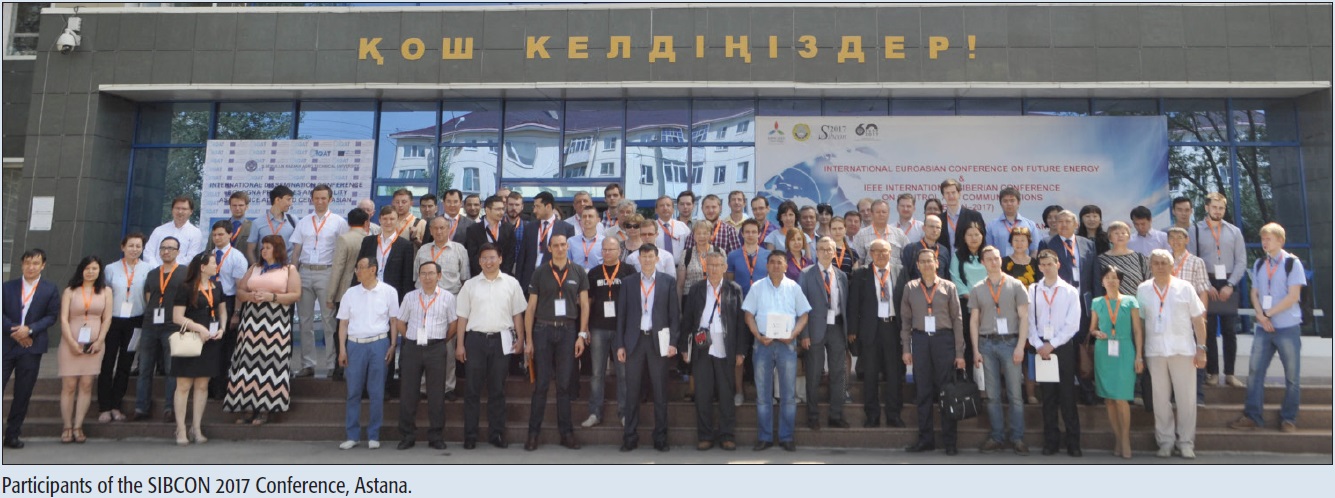
The policy of energy independence is a strategic target of many states. Kazakhstan is the eighth largest country in the world in terms of territory, but not population. The only explored deposits of coal extracted from an open-cast mine surface is enough for 300 years. Nevertheless wind power engineering is widely developed in Kazakhstan. A possible reason is the high cost of constructing power lines to far away places. Also, the strong wind in the steppe blows constantly and mainly in one direction, in contrast with the weak breezes in Europe. However, it is necessary to monitor the remote power objects and to provide control and safety. It is effective only by wireless communications.
The second advantage of Kazakhstan is the organic agriculture. It is a very technological part of the economy where each plant growing is under control. Because of the distances that need to covered on the steppe, control is possible only by wireless communication.
Hence, energy and agriculture development inevitably requires the design of wireless control and communication facilities. But IEEE activity has not been present in Kazakhstan until now. More correctly, Kazakhstan is a white spot on the IEEE map. It seems that ComSoc should not miss the opportunities in this market before it quickly becomes overcrowded.
To attract attention to these problems, the first Euroasian Conference on Future Energy, together with the International Siberian Conference on Control and Communications, was held in June in the capital of Kazakhstan. Another purpose was the propagation of IEEE development through the formation of Chapters and Sections. We are convinced that in the large industrial and academic cities of Kazakhstan (Astana, Almaty, Karaganda, etc.) it is necessary to have Chapters for the basic directions of strategic development: communication, power energy, control, and future agriculture.
The conference supports interdisciplinary discussions and interaction among scientists and engineers, establishing international cooperation through participation in the activities of the professional communities of IEEE.
The Conference was held at Saken Seifullin Kazakh Agrotechnical University in Astana. The University has a strong Power Energy faculty with a Radio Engineering, Electronics and Telecommunications Department. Financial support has been provided by the administration, namely, the Rector Akhylbek Kurishbayev, the Vice-Rector on strategic development Sergey Mogilnyy, and the dean of faculty Sultanbek Issenov. Employees of the Radio Engineering Department volunteered as organizers of the Conference, including Arman Mirmanov and Botagoz Khamzina. The Vice-President of the creation and operation of space systems, the Kazakhstan cosmonaut A. Aimbetov, and professor of the School of Engineering of the Nazarbaev University, IEEE Member Mehdi Bagheri, provided invited welcome lectures. Ordinary reports were presented within two days at 32 sessions in eight tracks, including Communications, Control, and Power Electronic Devices. The Proceedings of SIBCON-2017 are published in IEEE Xplore in the form of full papers.
National Instruments Russia R&D is the old partner of the SIBCON conference. Representatives of the company organized the following hands-on classes: “Basics of LabView,” ”MyRIO Platform for quick support of the engineering projects,” and “New generation of the graph design of applications on LabView Software Technology Preview.” In the special session “Computer Measurement Technologies” some questions on the introduction of innovative technologies for decision making for engineering problems in communications, automation of manufacturing, modeling, and processing of experiments were discussed. KATU is completely equipped with NI tools, and students fulfill class projects on communication systems.
The social program included a banquet, technical excursions and a sight seeing tour. The International Exhibition ASTANA EXPO-2017 devoted to future energy technologies was open in the capital of Kazakhstan during the Conference, and all participants could visit the exhibition. Astana is the new capital of Kazakhstan, and it is a historic but very modern city. The rich history, huge cultural heritage, and modern technologies harmoniously intertwine here. It is practically the second Singapore, and maybe the first. The capital is dazzlingly beautiful. Walking around the city, you can admire unusual modern installations, which give Astana its special charm: Bayterek, the symbol of Astana, the Green Water Boulevard “Nurzhol” recreational pedestrian zone with the avenue of singing fountains, the Independence Palace, the Palace of Peace and Concent, the Palace of Arts, the National Museum, the Astana Opera, etc.
ComSoc is actively present in Europe, but it is necessary to expand into new territories and new markets. We invite to Astana all who are interested in extending the development of ComSoc activities. Above all, we suggest locating a future ICC in Astana. We are sure you will not be disappointed.